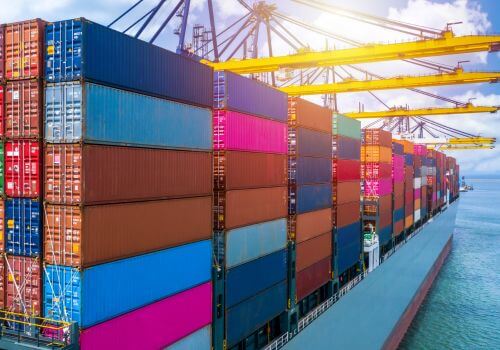Drayage is a crucial component of logistics and supply chain management that involves the short-distance transportation of goods, typically within a single urban area. This service plays a vital role in connecting different modes of transportation and ensuring the smooth flow of cargo from ports, rail yards, and other transportation hubs to their final destinations.
What is drayage in logistics?
Drayage refers to the process of moving shipping containers or other freight over short distances, usually as part of a longer overall journey. It serves as a critical link in the intermodal transportation system, facilitating the transfer of goods between various modes of transport such as ships, trains, and long-haul trucks.
The term “drayage” originates from the word “dray,” which historically referred to a type of low, sideless cart used for short-distance transport. While the means of transportation have evolved, the concept of short-haul movement remains at the core of drayage services.
What are the key characteristics of drayage?
Drayage operations have several distinctive features that set them apart from other forms of transportation:
- Short distances. Drayage typically involves moving cargo within a single metropolitan area or between nearby locations.
- Quick turnaround. Most drayage operations can be completed within a single work shift, often in just a few hours.
- Intermodal connectivity. Drayage serves as a crucial link between different modes of transportation, such as sea, rail, and road.
- Container handling. A significant portion of drayage involves moving standardized shipping containers.
- Local knowledge. Drayage providers often have specialized knowledge of local roads, ports, and regulations.
What are the different types of drayage?
The Intermodal Association of North America recognizes several types of drayage services, each catering to specific logistical needs:
Inter-Carrier Drayage
This type involves moving cargo between different carriers within the same metropolitan area. For example, transporting a container from one railroad terminal to another for continued transport.
Intra-Carrier Drayage
Intra-carrier drayage refers to the movement of goods between facilities operated by the same carrier. This could involve transferring cargo between different terminals or warehouses owned by a single company.
Door-to-Door Drayage
Also known as retail drayage, this service involves delivering goods directly to the end customer or retail location. It’s the final step in the supply chain, bringing products to their ultimate destination.
Shuttle Drayage
When ports or rail yards reach capacity, shuttle drayage comes into play. It involves moving containers to temporary storage locations or parking lots until space becomes available at the main facility.
Pier Drayage
This type of drayage focuses on transporting cargo between rail terminals and ocean ports. It’s a crucial service for connecting land and sea transportation.
Expedited Drayage
or time-sensitive or high-priority shipments, expedited drayage offers rapid transportation to ensure quick delivery. This service is often used for perishable goods or urgent deliveries.
What is the importance of drayage in the logistics industry?
Drayage plays a critical role in the overall efficiency and effectiveness of supply chains. Here’s why it’s so important:
Bridging Transportation Gaps
Drayage services fill the crucial gap between long-distance transportation methods and final destinations. Without drayage, cargo would be stranded at ports or rail yards, unable to reach warehouses, distribution centers, or retail locations.
Enhancing Supply Chain Flexibility
By providing short-distance transportation options, drayage allows for greater flexibility in routing and scheduling. This adaptability is essential for responding to changes in demand or unforeseen circumstances.
Improving Efficiency
Efficient drayage operations can significantly reduce overall transit times and costs. By streamlining the movement of goods between transportation modes, drayage helps minimize delays and keeps supply chains running smoothly.
Supporting Just-in-Time Inventory
Many businesses rely on Just-In-Time (JIT) inventory systems to reduce storage costs and improve cash flow. Drayage services support these systems by providing timely and reliable short-distance transportation.
Facilitating Global Trade
As international trade continues to grow, the role of drayage becomes increasingly important. It enables the smooth flow of goods from global shipping lanes to local markets, supporting economic growth and commerce.
In summary, Drayage in logistics is the short-distance transportation of goods, typically moving shipping containers between ports, rail yards, or other transportation hubs and nearby destinations within the same urban area.






